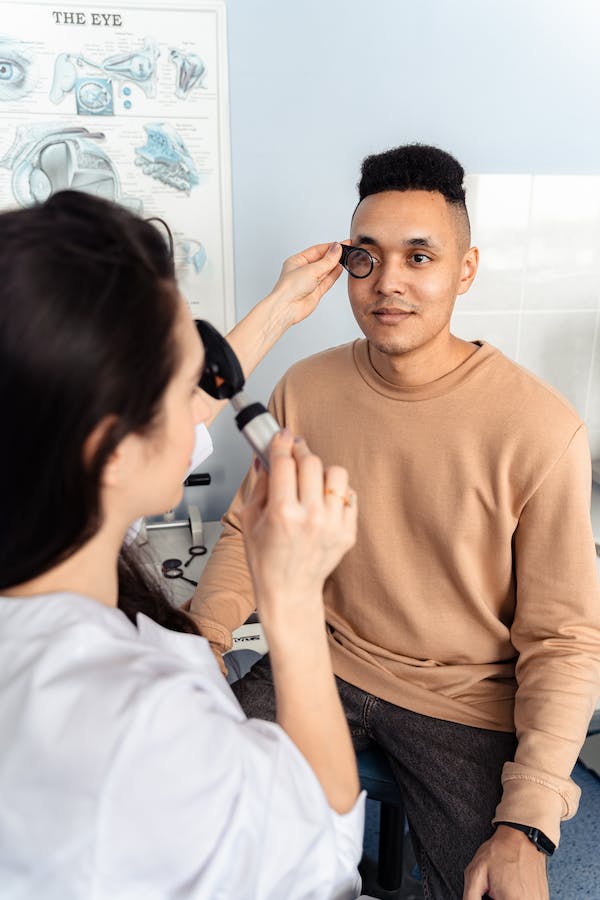What’s an eye refraction exam?
by siteadmin

Refraction tests are an important part of a comprehensive eye examination. They help doctors determine prescriptions for contact lenses or eyeglasses, and they can also detect diseases that don't show symptoms until later.
The eye doctor will begin the refraction test by measuring how much light bends when it passes through each pupil and lens. This allows them to identify refractive error such as nearsightedness (nearsightedness), farsightedness (farsightedness) or astigmatism.
What is a Refraction Test?
Refraction is a vital part of an eye exam. It provides your optometrist with the information needed to determine whether you need glasses, contact lenses, or both. Also known as vision testing.
Your doctor will use equipment that looks like a large mask, with holes for your eyeballs to measure your refractive errors. They will shine specialized light into each eye and then ask you to look at an eye chart while moving different lenses in front of your eyes.
Refraction testing measures the amount of light that enters your retina and how well the cornea and lens focus light onto the retina. This test will tell your optometrist, or Ophthalmologist, which lens prescription is needed to achieve 20/20 vision.
How is a refraction tested?
Refraction tests should be performed as part of an eye examination at least twice a year to detect health conditions like presbyopia, glaucoma, and macular degeneration. According to NerdWallet, they also help determine the amount of vision correction that you need.
Refraction testing is usually not painful and doesn't cost much. Your doctor will use a device called a "phoropter" that looks like a mask, but has lenses attached. You will look through it to see a chart that has letters that are getting smaller from the top to the bottom. Your eye specialist will adjust the lenses until you can see clearly. This gives them a good estimate of how much power is needed in your prescription for glasses or contact lenses.
What are the results from a refraction?
Refraction tests give your eye doctor the results they need to prescribe eyeglasses and contact lenses. They also alert them to any eye conditions or diseases that may exist but are not yet manifested physically.
Refraction tests are performed by looking through a device known as a phoropter, which has lenses of different strengths. You will be asked to read a series or symbols on a chart with each lens, before telling your doctor which lens is clearer.
Medicare and other medical insurance plans do not cover refraction tests. CMS (Centers for Medicare & Medicaid Services) has determined that refraction testing is not essential to maintaining your eye health.
What are the dangers of not performing a refraction?
Refractor testing every one or two years helps eye doctors track vision changes that happen regularly and determine the prescription for each patient.
The phoropter is a tool that eye doctors use to perform the refraction part of an examination. This large machine looks like a mask, with dials and switches. Patients sit in front of this machine while looking through various combinations of lenses. Their doctor will then write down the prescription needed to achieve 20/20.
Diabetes patients should undergo annual refraction testing to detect diabetic retinal disease and glaucoma. Both are related to excessive pressure in the eye. Regular eye tests can help doctors detect these problems early and prevent permanent vision loss.
https://www.nuvisioncenters.com/glendale-eye-care/
Refraction tests are an important part of a comprehensive eye examination. They help doctors determine prescriptions for contact lenses or eyeglasses, and they can also detect diseases that don't show symptoms until later. The eye doctor will begin the refraction test by measuring how much light bends when it passes through each pupil and lens.…
Recent Posts
- Southwest Patio Elevates Outdoor Living with Exceptional Pergolas and Four Seasons Patio Covers in Phoenix, Arizona
- Expert Cleaners Lexington Shares Essential Tips for Properly Cleaning Hardwood Floors
- Exploring the Drawbacks of Duct Cleaning: Insights from Air Vent Cleaning Charlotte
- Exploring the Drawbacks of Duct Cleaning: Insights from Air Vent Cleaning Charlotte
- Clearing the Dust: Duct Cleaning Louisville KY Shares Tips to Make Your Home Less Dusty
